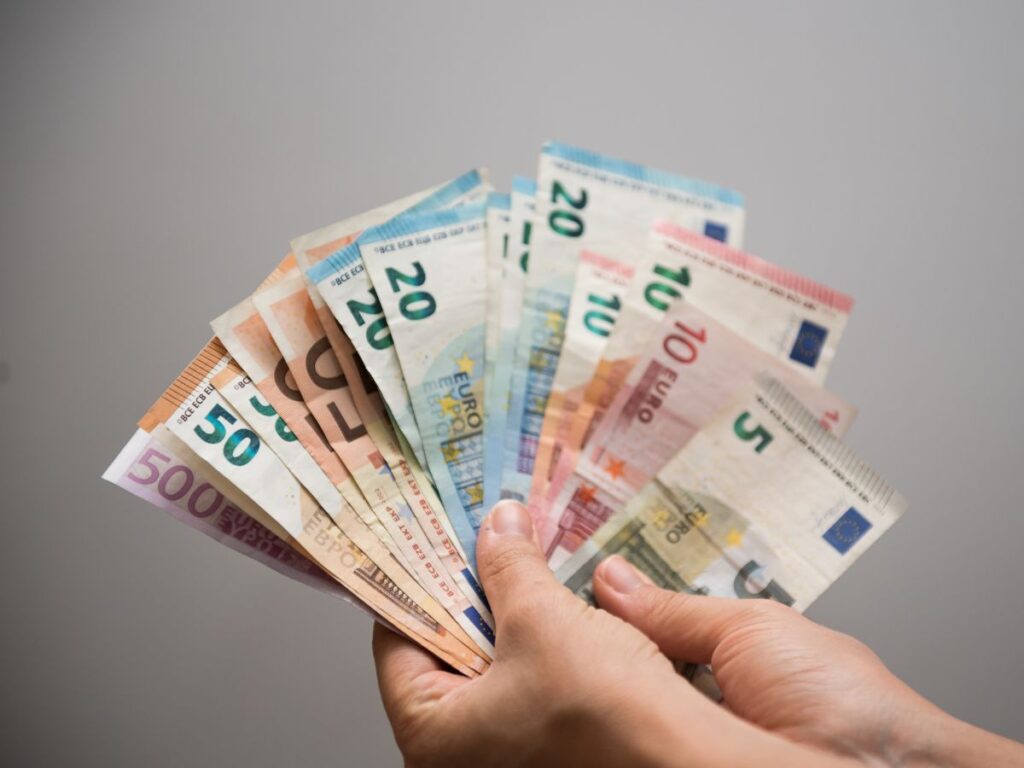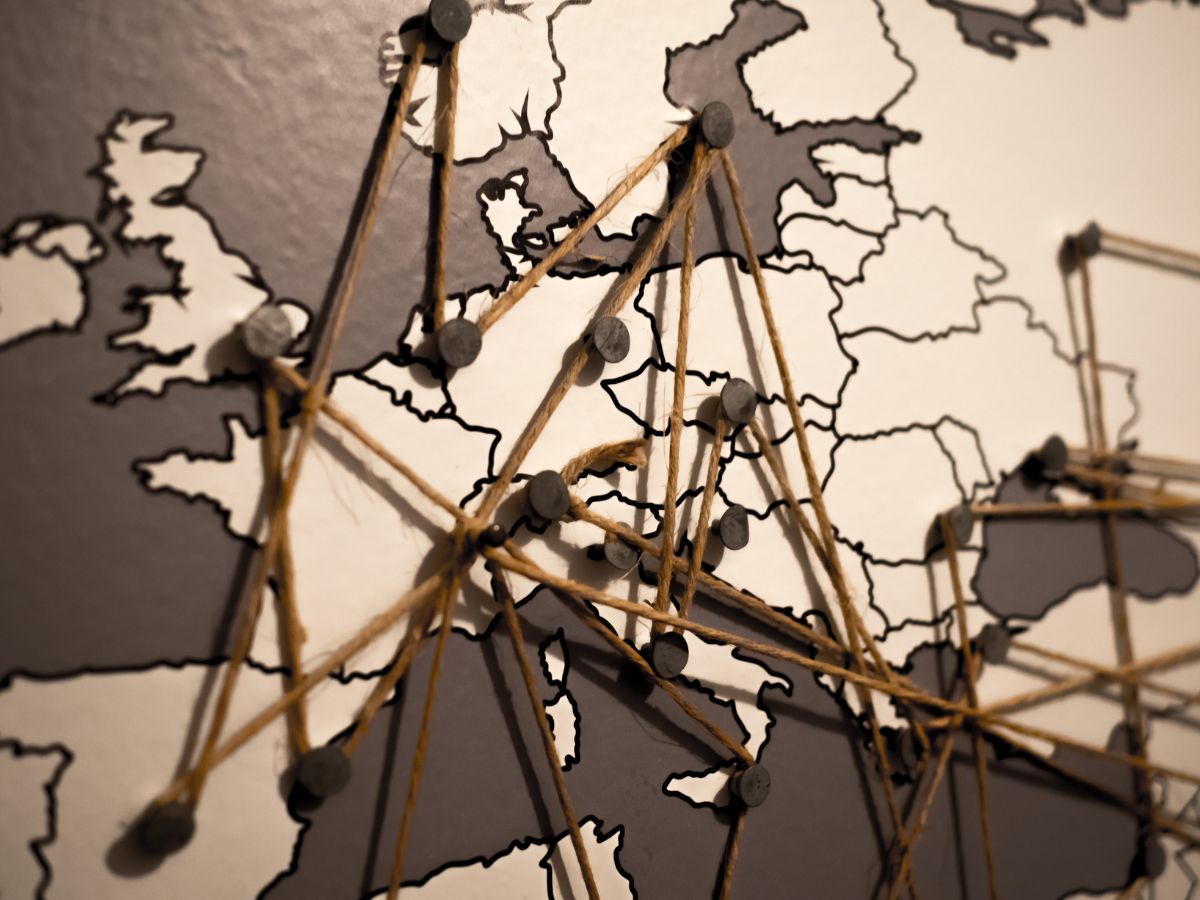Europe is one of the most popular regions in the world for travel but it’s also one of the most expensive. Prices do vary considerably as you move from west to east though. Below, we’ll take a look at the cost of travel in Europe and compare a wide range of countries. We also have a suggested monthly Europe backpacking budget for those looking to do a big trip around the continent.
Travel Costs in Europe
Cost of Travel in Europe
Europe backpacking budget
| Estimated Daily Backpacking Budget (Euros) | Countries |
| €25 | Bulgaria, Georgia |
| €30 | Turkey, Poland, Serbia, Romania |
| €35 | Czech Republic, Hungary |
| €40 | Slovakia, Estonia |
| €45 | Portugal, Croatia, Cyprus, Greece |
| €50 | Spain |
| €55 | Germany, Austria |
| €60 | UK, Ireland, Italy, Sweden, Finland |
| €65 | The Netherlands, Belgium, Denmark |
| €70 | France |
| €75 | Iceland |
| €80 | Norway |
| €85 | Switzerland |
The common consensus in pretty much every backpackers guide to Europe is that it is an expensive region to travel in and that is mostly true. However there are ways to get around without spending a huge amount if you are smart.
Firstly the continent is relatively small and transport is fast. By making use of special deals on budget airlines or by fully taking advantage of a European railpass, you can see quite a lot for less than you might think. There is still good value to be found in most of Eastern Europe, particularly in the Balkans where you can get by on a backpacking budget of just €25/day in some countries.
That being said, costs have risen in recent years in places like Croatia where the more popular travel destinations are no longer that cheap, certainly not during the peak summer months. Head to Scandinavia or a Western capital like Paris or London though and it can easily cost more like €70/day to travel in Europe and even that probably won’t cover you in extortionate Switzerland.
These figures are based on a solo traveller staying in hostel dorms and steering clear of fancy restaurants and bars in favour of hostel kitchens and cheapish establishments when you do go out. The more detailed backpacking budgets (linked countries above) also have a more conservative estimate, which may be more adequate for anyone with limited time hoping to pack a lot in. Likewise, if you’d rather a slightly more comfortable style of travel and don’t want to stay in dorms everywhere, consider adding a bit more to these budgets which are designed for shoestring backpackers.

Monthly budget to backpack Europe
| How long? | Possible Europe Backpacking Budget | Possible Western Europe Backpacking Budget | Possible Eastern Europe Backpacking Budget |
| 1 Month | €1500 | €1800 | €1100 |
| 2 Months | €3000 | €3600 | €2200 |
| 3 Months | €4500 | €5400 | €3300 |
A 1 month Europe trip might cost around €1500 if you visit some of the main destinations in the west of the continent, but also head east of the old Iron Curtain. Mainly focus on the West and some of the most popular backpacking destinations in Europe and you’d probably be wise to budget around €1800, the equivalent of €60/day.
If you’ve got a longer time-frame, you might want to look at around €4500-5000 as a base figure to backpack Europe for 3 months, although you could get that down to below €4000 if you spend most of your time in the East.
This is a really rough estimate though and your exact costs will depend largely on what kind of traveller you are and what kinds of things you usually spend your money on. If you spend a week shopping in Milan and are constantly hitting glamorous night spots then you could probably double it and then some. If you don’t drink alcohol or are really knowledgeable when it comes to finding the best deals on planes, buses and trains, it will be a bit less than what is quoted above but probably not by much.

There are various other factors that will have an impact on your budget to backpack Europe. Travelling in the peak summer months (July & especially August) or around major holidays such as Christmas or Easter will be more expensive than doing a trip in January or February. Focusing on one country or region will also see you save a considerable amount on transport costs when compared to somebody who basically wants to tick off all the typical major destinations (Paris, Rome, Barcelona etc).
You should also consider that the figures on this page do not factor in pre-trip expenses such as long-haul flights, travel insurance, visas or anything else you might need for your trip. The cost of these will vary from person to person depending on where you’re from.
Which countries have the Euro?
As of 2023, there are 20 European countries that use the Euro: Austria, Belgium, Finland, France, Germany, Ireland, Italy, Luxembourg, the Netherlands, Portugal, Spain, Greece, Croatia, Cyprus, Estonia, Latvia, Lithuania, Malta, Slovakia, and Slovenia.
The Euro will almost certainly be the main currency you need for any backpacking trip around Europe that involves visiting multiple countries but it is not accepted everywhere. The UK, Switzerland, Norway, Denmark, Sweden, Poland, Hungary and the Czech Republic are among the European countries with their own currencies. Consider getting a travel-friendly debit card like Revolut to save on exchange and banking fees as you travel around the continent.
As of February 2023, one Euro is worth: US$1.07 | £0.89 | 1.55 AUD | 141 YEN | 1350 WON | 1.44 CAD.

Budget Travel in Europe – Money Saving Tips
Find ways to sleep for free/less
Accommodation costs do take up a big chunk of any Europe backpacking budget with hostel beds as much as €30-40 per night in some of the most expensive destinations. Couchsurfing is one option and features in our look at how to find cheap accommodation as a backpacker.
You can also sometimes find short-term work in hostels in exchange for a bed while you can also use an app like Worldpackers to hunt down work exchanges. Another option in the summer months is to camp which is a great choice in Scandinavia where hostels are very expensive but favourable camping laws exist making it easier for travellers to pitch a tent.
Avoid the middle of summer
If you want to visit Southern countries, particularly coastal destinations in Spain, Portugal, Italy and Greece then consider visiting outside of the high season (mid-July to late August) and your costs will be less. June or September are great options as the weather is still really nice but the crowds and prices are down.
Plan your transport & be flexible
You might want to consider getting a Europe railpass if you want to travel around a lot and cram as many countries in as possible, although even the youth options are by no means cheap.
Airfares have also risen in recent years but with the likes of Easyjet, Wizz Air and Ryanair, Europe still has many budget airlines and you can still find international flights for under €20 if you’re a bit flexible on when and where you travel. Use Skyscanner to help find the best fares. They even have a “travel anywhere” option which will quickly show up the best deals on any given day or month from any destination.
If you are planning on taking a lot of budget flights though, it’s really important that you try to pack light. In some cases, luggage fees are more than the cost of the ticket so think about that when packing and preferably before purchasing a backpack for your trip. Research the baggage rules on the main budget airlines!
There are loads more things you can do to save money whether you’re backpacking in Europe for 10 days or 3 months. Check out these 84 tips for budget travellers in Europe for some more inspiration!
All of these estimated backpacking budgets were last updated in February 2023 according to prices and exchange rates at that time.


It is quite surprising that Poland and Czech Republic are actually cheaper than Russia. Looks like such high prices for travelling can only be applied to the central regions like Moscow an Saint Petersburg. Prices may vary dramatically there.
Hi, yeah it’s quite hard to really include Russia in this because obviously it’s a massive country and there are huge variations. 35 Euros/day might be reasonable for the big cities in the West. You could probably get by on a lot less in some parts of the country. However if you really want to travel around the country, you could end up spending a significant amount due to the distance you need to cover so it’s not easy to factor it into a table like this.
To add to the confusion, the exchange rates in Russia also seem to fluctuate significantly so the timing of your visit could also be a factor.